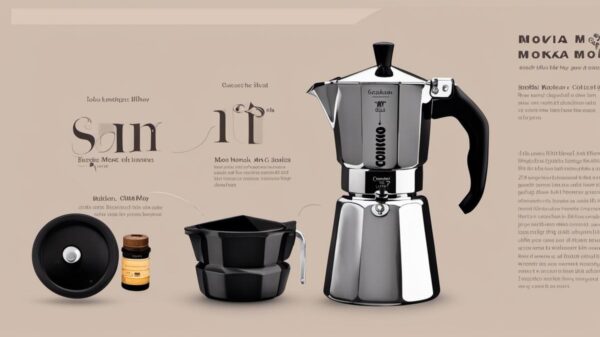Turkish Coffee vs Espresso: Complete Guide
Brewing Differences for Turkish Coffee & Espresso
Turkish coffee and espresso are brewed using unique processes, each with a specific flavor outcome and brewing speed. Turkish coffee involves combining very finely ground coffee beans with water and, often, sugar, and slowly heating the mixture in a special pot known as a cezve or ibrik. Unlike methods that quickly pass water through the coffee, Turkish coffee requires the coffee to brew unhurriedly on a low heat, allowing rich flavors to develop. Crucially, the coffee grounds are not filtered out, making for a thick, rich cuppa with a notable layer of sediment remaining.
The pot used, typically made from copper or brass, plays a significant role in the coffee’s flavor by maintaining a steady heat during brewing. One should avoid reaching a full boil to preserve the coffee’s characteristic foamy head – a token of a well-prepared Turkish coffee. Given the finer grind, almost to the consistency of powdered sugar, more coffee surface interacts with water, extracting deep flavors even at a lower temperature.

Espressos, in contrast, are prepared through a high-pressure, quick-extraction process using espresso machines. These machines press hot water through finely-ground coffee beans packed tightly into a portafilter. The grind consistency is crucial; too coarse and the water rushes through without absorbing flavors, too fine and you choke the flow, leading to a bitter brew.
Pressure is the key protagonist in espresso making. Typically operating at around 9 bars of pressure (which is equivalent to nine times the atmospheric pressure at sea level), this method extracts coffee solubles very efficiently and quickly. The outcome is a small quantity of concentrated coffee topped with crema, a rich and flavorful emulsion of air, oils, and fine coffee particles. This crema adds depth to the delicious espresso and is viewed by aficionados as a marker of a well-extracted shot.
The juxtaposition in time frames—espresso’s rapid under-a-minute brew versus the slowly simmering pace of Turkish coffee—reflects their birthplaces in world history and place in current coffee cultures. Turkish coffee’s gentle brew invokes the Ottoman empire’s bustling markets and communal rituals, seeming almost meditative in its unhurried approach to extracting flavor. On the other hand, espresso echoes the swift pace of early 20th-century Italy where invention and industry required a quicker, yet robust, shot of vitality.
Each technique leverages heat and time differently to beckon out the quirks of roasted beans, proving profoundly distinct coffee experiences bound by craft and culture. Whether it’s the thoughtful simmering that Turkish coffee demands or the brisk pressure-driven alchemy of an espresso machine, both methodologies contribute uniquely to the elaborate tapestry of global coffee tradition.
Flavor Profiles and Textures of Turkish Coffee & Espresso
Turkish coffee and espresso offer rich textures and complex flavor profiles unique to each. Turkish coffee yields a heavy-bodied and intensely flavored coffee, imbuing every sip with deeply engaging earthy tones and subtle sweetness when sugar is added during the brew process. The unfiltered presentation leads to a textured, somewhat gritty sediment that lingers as a reminder of its authenticity and origin.
In contrast, espresso enchants one’s palette with a bold burst of flavor that packs an entire coffee experience into a single, potent shot. The creamy consistency of a well-pulled espresso is crowned by its signature crema — the golden, caramel-colored foam that forms on top as a result of the high-pressure brewing technique.1 This velvety layer lends a slightly sweet and notably smooth introduction to the full-bodied coffee that lies beneath. A good espresso tantalizes with an intensely concentrated flavor profile, featuring notes of chocolate, nuts, and sometimes hints of citrus or spice, reflecting the quality of beans and the roasting process used.
The differential in mouthfeel between the two is pronounced.
- Turkish coffee offers a distinct textured experience that can engage drinkers down to the last sediment-filled sip.
- Espresso provides an intensely smooth affair, with crema soaking through the compact liquid amalgam to offer a nuanced sensory experience in every mere ounce of liquid.
These brewing methods intimately express the characteristics of diverse coffee beans, influenced by the geographical origins, roasting choices, and intricate elements dictated by traditional and modern preparation approaches. Whether one prefers the slow contemplation encouraged by Turkish coffee or the brisk vivacity propelled by espresso, both deliver vastly different yet equally reverent celebrations of the beloved coffee bean.

Turkish Coffee & Espresso: Cultural & Historical Backgrounds
Turkish coffee and espresso have rich traditions and cultural significances that span continents and centuries, mirroring the development of societies around these revered beverages.
The narrative of Turkish coffee begins in the Ottoman Empire during the 15th century, where it transcended mere consumption to become a vital cultural component. Its communal consumption underlined social gatherings, solidifying its role as a facilitator of social rituals, deeply embedded within Middle Eastern and Balkan cultures. The preparation of Turkish coffee, deliberate, is a testament to the philosophy of patience and hospitality that signify shared human connection—principles deeply rooted within Turkish society.
The brewing of Turkish coffee is steeped in symbolism; particularly noted during engagement ceremonies where a prospective bride will prepare coffee for her suitor’s family, a gesture both of grace and tradition.2 It’s an offer of peace, a door to conversation, and an insight into the subtle intricacies of human relations enjoyed over centuries throughout the empire’s majestic coffeehouses, which were bustling nexuses of intellectual collaboration and leisure.
Espresso emerged amidst the industrial boom of early 20th-century Italy. The espresso machine, originally patented by Luigi Bezzerra in Milan, was a product of technical ingenuity inspired by the expedience demanded by a fast-paced industrial lifestyle.3 It quickly became Italy’s heartfelt ode to efficiency and flavor, with each quick-shot serving reflecting an appreciative nod to the Italian art of engineering and culinary adeptness.
In Italy, espresso transcends the mere act of caffeine ingestion; it evolved into an integral element of societal pulse and tempo. Tiny cafes scatter through narrow cobblestone streets and border grand piazzas wherein patrons from near and afar stand shoulder to shoulder to discuss lively topics over steaming cups. Italian espresso culture conveys intimacy and community; it’s a dynamic experience undertaken standing up, indicating it’s less about relaxation, more about a revitalizing break enabling further pursuits — a caffeinated reflection of cultural innovation and mobility.
From the grand coffeehouses of Istanbul to the bustling espresso bars of Rome and Milan, both Turkish coffee and espresso began intertwined with the rich historical fabric of their regions, elevating their importance beyond simple beverages to become potent cultural symbols. They encapsulate sentiments that outwit their origin stories, conquering international admirations while continuing to represent the refinements of their time-honored preparations.
Such profound connections allow us to appreciate not simply the taste but the transcultural journey borne in each sip — a legacy of continents and the chronicles of civilization sweetened within cups of heritage and ardor.
- Illy A, Viani R. Espresso Coffee: The Science of Quality. Academic Press; 2005.
- Akyol T. The World of Cafes and Coffee Culture in the Ottoman Empire. Journal of Ottoman Studies. 2013;(42):229-239.
- Morris JM. The Cappuccino Conquests. The Transnational History of Italian Coffee. Website. 2007.





























